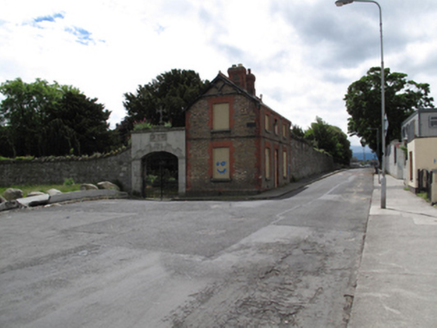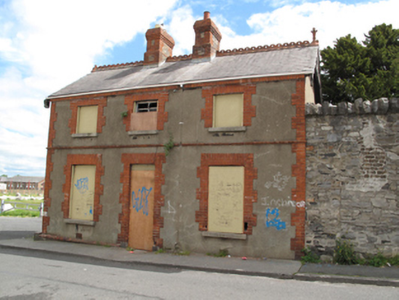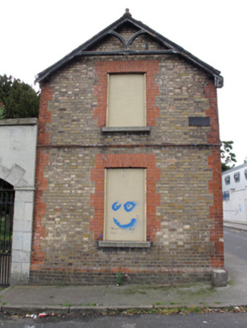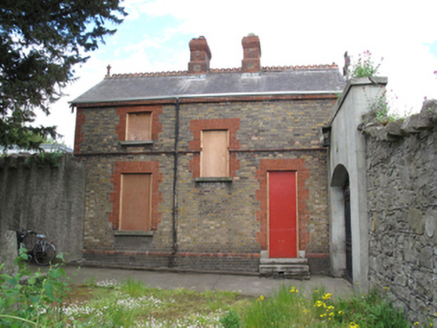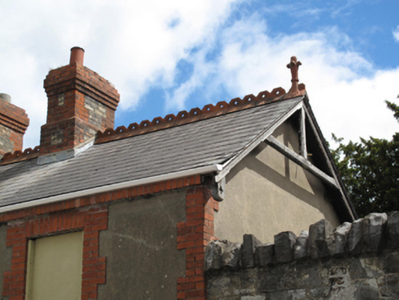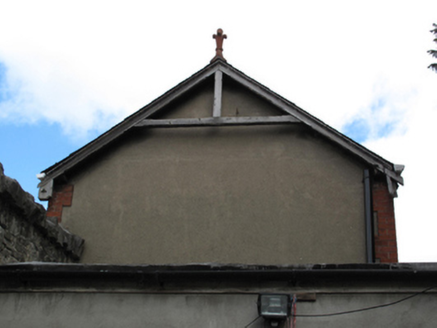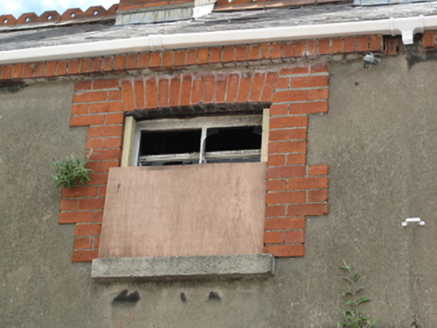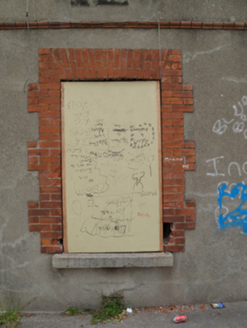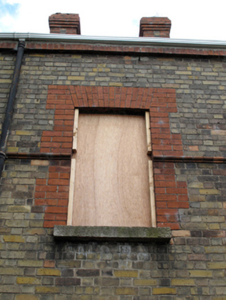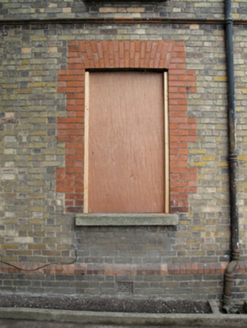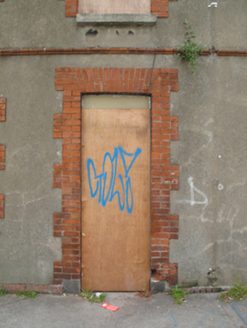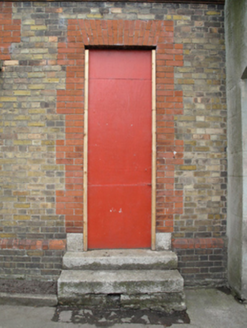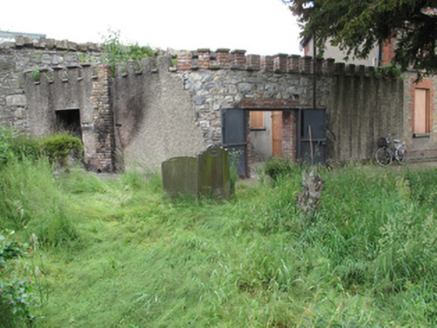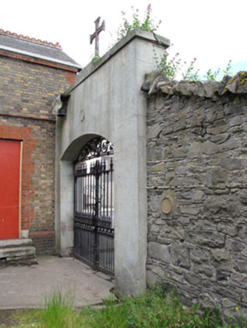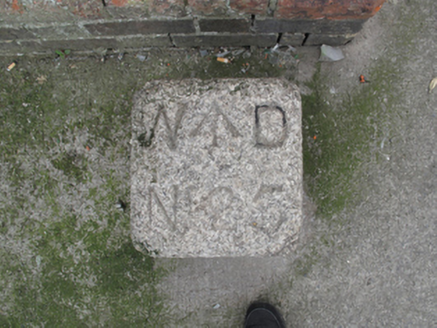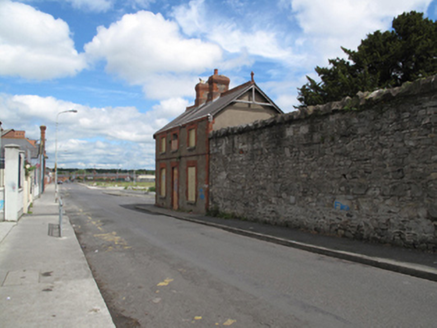Survey Data
Reg No
50080100
Rating
Regional
Categories of Special Interest
Architectural, Social
Original Use
Sexton's house
Date
1860 - 1900
Coordinates
312106, 233118
Date Recorded
12/06/2013
Date Updated
--/--/--
Description
Detached three-bay two-storey sexton's house, built c.1880, having single-storey flat-roofed extension to south elevation. Now disused. Pitched slate roof having terracotta ridge crestings and finial, having exposed timber end trusses, red brick chimneystacks, red brick eaves course and some cast-iron rainwater goods. Yellow brick walls laid in Flemish bond, having moulded red brick string course and plinth course, red brick quoins to all elevations, rendered walls to front (west) and south elevations. Square-headed window openings having cut stone sills, red brick block-and-start surrounds, all openings blocked, timber sash window evident in first floor opening to front elevation. Square-headed door openings to front and rear (east) elevations, having red brick block-and-start surrounds, all openings blocked, granite plinth blocks and steps to rear elevation opening. Located on street, within boundary of Goldenbridge Cemetery, having rear access from cemetery grounds and small yard with shed to south, having castellated brick walls, partially rendered. Square-profile granite War Department bollard to north-east corner of house.
Appraisal
This house completes the north-east boundary of the garden cemetery at Goldenbridge. This was the sexton or graveyard caretaker's house, and it addresses both the street and the entrance to the graveyard. The elegant brick façade is greatly enlivened by the use of decorative brick detailing to highlight key features such as window and door openings while an elegantly executed eaves course, decorative ridge tiles and exposed roof trusses further enhance the building's aesthetic appeal. The brick detailing is testament to the skill and craftsmanship of nineteenth-century brickworkers. Although some windows have been lost, much original fabric is retained. Despite suffering recent damage, it continues to make a positive contribution to Saint Vincent’s Street West.
